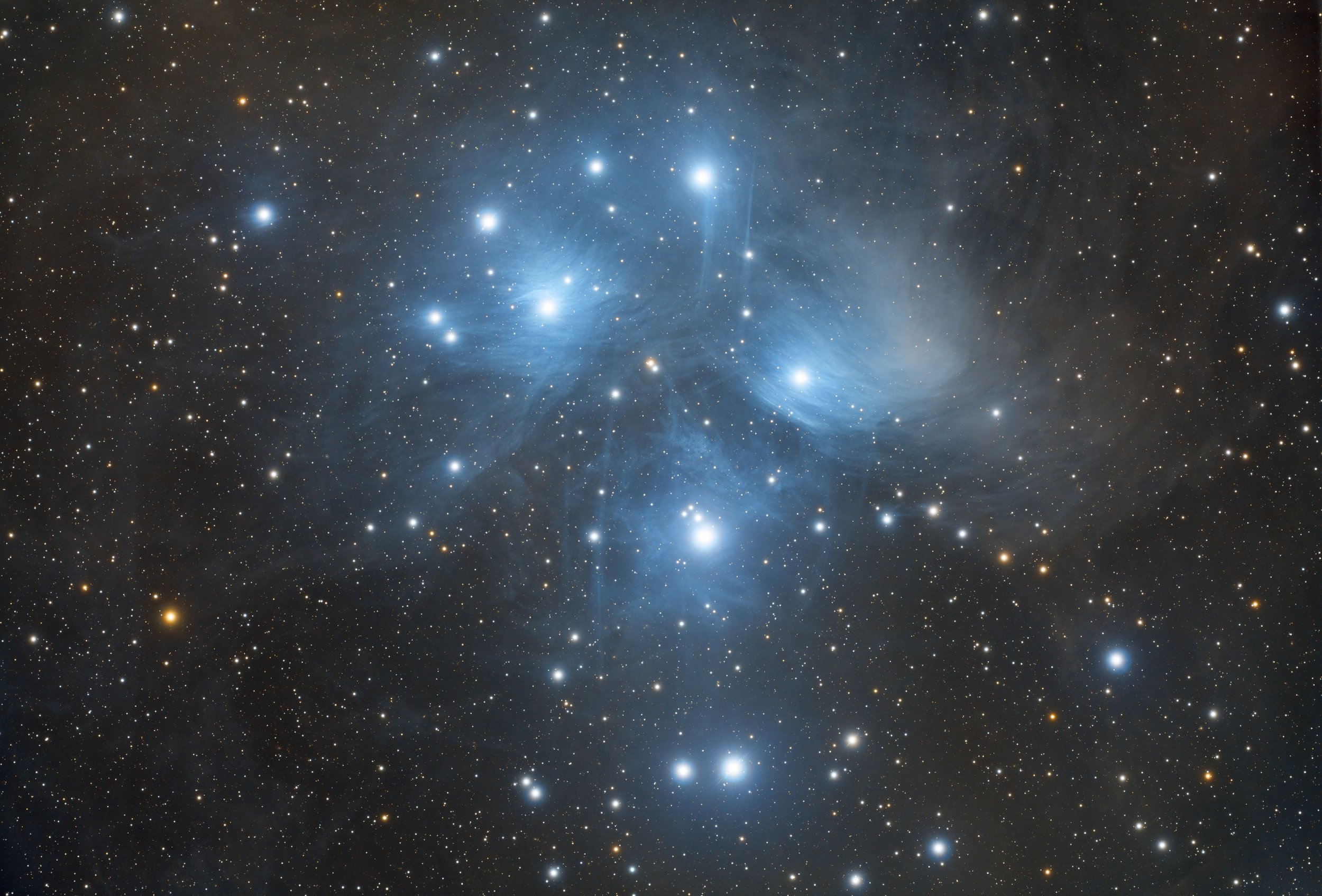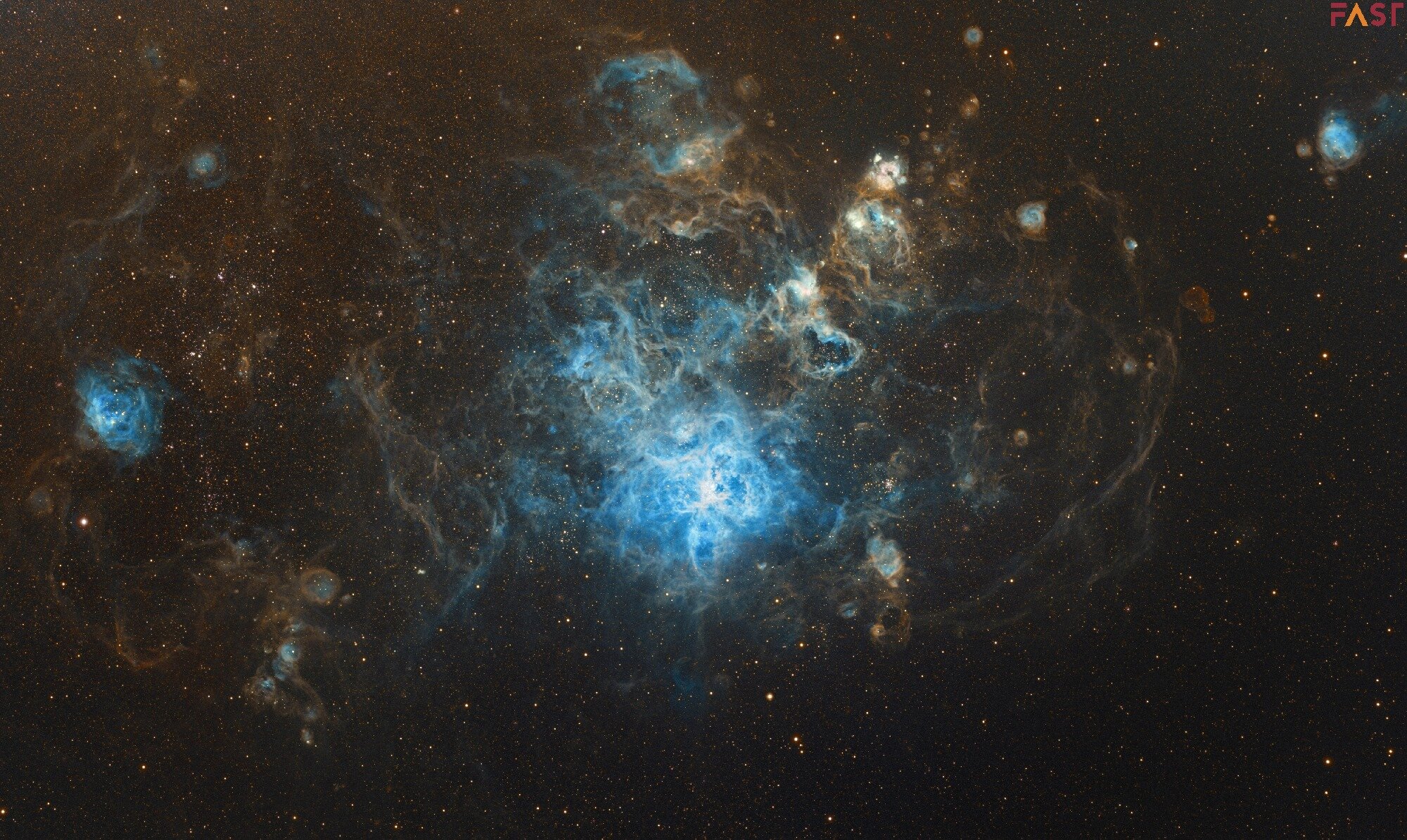
AAPOD2 Image Archives
The Ghost Of Jupiter A.K.A The Eye Nebula (NGC3242)
Image Description and Details :
I did a Live stack with Gain 50 and Gain 120 each with ASI294MC-Pro, and drizzle-integrated.Place: Backyard East Pattaya Thaiand (Bortle Class 6, Moon Phase 82.9%)Date:23nd / Feb / 2021 1:24(UTC+7)TS TSRC10T Carbon Truss Prime Focus (250mm F/8 f/2000mm)CCD: ZWO ASI294MC ProFilter: Optolong L-ProMount :iOptron CEM70G
Copyright: Taro Seki Astropical.uk
Stellar Nursery in Perseus
Our Milky Way is actually full of dust, but hidden in the black starry background, it is not easy to see. Only by accumulating a long time of exposure, the dust that pervades the stars will show up, presenting rich details of intricate complexity.
This large patch of dust in the picture is part of the Perseus molecular cloud, located at the junction of Taurus, Aries, and Perseus, about 1,000 light years away from the Earth. The dust with a total mass equivalent to 10,000 suns is gathered in clusters or twisted into twists. The thick areas are dense and opaque, and darker than space itself.
In this darkest corner, new light is gestating.
The dust near the center, a little red light came out from it, that was a star cluster forming in it. Beside this dust, a newborn star dispelled the haze, illuminating the surroundings with bright light, and became the brightest deep sky object in this area.
In the new Chinese year of the ox, may the world sweep away the dust, dispel darkness, and reappear light.
Location: Hebei Kangbao Galaxy Observatory
Filming time: November 7, 2020-February 4, 2021
Telescope: Sharpstar 150 2.8 HNT
Camera: QHY268C
Mount: Aton iOptron CEM70/CEM60
Guide : QHYCCD OAG-M
Guide camera: QHY5L-II-M
Number of shots: 130×1000 seconds, 70×300 seconds
Cumulative exposure: 41.9 hours
Shooting software: APT
Processing software: PixInsight, PhotoShop
Copyright: Steed Yu
M83 The Southern Pinwheel galaxy
Another nice project made with Olivier Désormières from the SADR Team (acquisition Arnaud Peel and Olivier Désormières, processing Arnaud Peel): a complete new version with new RGB in bin 1x1 this time: I tried to keep as much as possible the faint details in the Hapha globules and enhanced the spiralSo thanks a lot to Olivier for the acquisition of a great Luminance and RGB with the Sadr association setup , Newton 14'' in Chile.I select the best FWHM subs for the luminance.60s subs were made not to burn the center of the galaxy.Red 20 subs@300s -20°C bin 1 gain highBlue 20 subs@300s -20°C bin 1 gain highGreen 20 subs@300s -20°C bin 1 gain highLight 30 subs@60s -20°C, gain highLight 39 subs@300s -20°C, gain highLight 81 subs@600s -20°C, gain highHalpha 45 subs@300s -20°C, gain highTotal exposure : 26h05
Copyright: Arnaud Peel
Seven Sisters in a Dusty Veil
Image Description and Details :
Visible to the naked eye, the Seven Sisters, or the Pleiades, is one of the best known open clusters. The blue reflection nebula around it is a popular target for imagers. Very deep images, like this one, show the surrounding faint clouds and tendrils of dust as well as some red H(II) emission regions.Acquisition, focusing, and control of Paramount MX mount (unguided) with TheSkyX. Focus with Optec DirectSync motor and controller. Automation with CCDCommander. Equipment control with PrimaLuce Labs Eagle 3 Pro computer. All pre-processing and processing in PixInsight. Acquired from my SkyShed in Guelph. Average transparency and average seeing. Data acquired December 6, 2020 – February 9, 2020 under a moonless sky.Takahashi FSQ-106 ED IV @ f/5 and QHY367C Pro one-shot colour camera with Optolong UV/IR filter.123 x 5mTotal: 10hr15m Image scale 1.9 arcsec per pixel.
Copyright: Ron Brecher
Tarantula nebula and beyond
Session automated with #FAST
Takahashi FS60c
ASI1600MM Pro
7 Position FW, 36mm
Feather Touch Starlight
Pegasus Astro
EQ6
Astronomik Ha 6nm: 140 ∙ 420s (gain: 139.00) -10C bin 1x1
Astronomik Ha 6nm: 10 ∙ 600s (gain: 139.00) -10C bin 1x1
Astronomik S2 6nm: 86∙ 420s (gain: 139.00) -10C bin 1x1
Astronomik O3 6nm: 96 ∙ 420s (gain: 139.00) -10C bin 1x1
Total exposure: ~39 hours
Location:
Colombari's Terrace, Belo Horizonte, Minas Gerais, Brazil
FAST · PSCS5 · Pixinsight
September - October - November - December 2020
January 2021
Copyright: Roberto Colombari
Sh2-224
Image Description and Details :
Sh2-224 in HOOlrvb made by Team ARO (astroaro.fr website) in Southern Portugal, Dark Sky Alqueva area. Francis Bozon, Jean-Luc Gangloff, Stéphane Gueyraud. Sh2-224 is a very weak supernova slash in the constellation of the Auriga, with an unusual shape.The acquisition of this photo was made with a Fsq 106 scope on ArEq6 Pro mount and Asi 1600MM camera.
The exposure times are as follows:Ha= 219X300''S2=112x300''O3=179X300''Luminance= 19x60''Red= 21x90''Green =20x60''Blue=23x60''That is a total time of about 33 hours
Copyright: TEAM ARO (Francis Bozon, Jean-Luc Gangloff, Stéphane Gueyraud.)
NGC 6888 Crescent Nebula
Image Description and Details : I photographed this composite image during July-August 2020 in my private observatory (Russia, Moscow region, Makeikha SQM 20.70 mag./arc sec2; Bortle class 4).Technical Data:Telescope: SkyWatcher Quattro 8SShooting Camera: ZWO Optical ASI 1600-MM COOLEDMounts: SkyWatcher EQ 8 PRO MountTelescope Guides: SkyWatcher EvoGuide 50EDGuide camera: ZWO ASI ZWO 120mm miniFocus Reducers: TeleVue Paracorr Type-2Program: Ivan Ionov Fitstacker · by Christian Buil Iris 5.59 · Fitswork 4 · Adobe Photoshop CS 5.1Filters: Astronomik LRGB 1.25 "the Type IIc · Baader Planetarium OIII 1.25" 8.5nm-CCD · Baader Planetarium H-alpha 1.25" CCD 7 nmFrames:Astronomik B (type 2c): 10x180" -20C bin 1x1Astronomik G (type 2c): 10x180" -20C bin 1x1Astronomik R (type 2c): 10x180" -20C bin 1x1Baader Planetarium H-alpha 1.25" CCD 7 nm: 105x600" -20C bin 1x1Baader Planetarium OIII 1.25" CCD 8.5nm: 60x600" -20C bin 1x1Accumulation: 29.0 hoursDark frames: ~ 15Flat field frames: ~ 15Offset Frames: ~ 15
Copyright: Sviatoslav Lips
The owl nebula - m97
The Owl Nebula, also known as Messier 97 (M97, NGC 3587, PN G 148.4+57.0), is a planetary nebula located in Ursa Major.
L-channel - 20 x 300 sec. bin 1x1;R-channel - 14 x 600 sec. bin 1x1;G-channel - 14 x 600 sec. bin 1x1;B-channel - 14 x 600 sec. bin 1x1;OIII- 40 x 900 sec. bin 2x2.Total integration time about 18:40 hours.
My setup: Telescope 8" Celestron Schmidt-Cassegrain (SCT) CPC800 GPS (XLT) on the equatorial wedge, focal reducer Starizona 0.75x, Feq.= 1626mm, camera Starlight Xpress Trius SX694, SX mini filter wheel, filters Astrodon LRGB E-series gen.2, Astrodon OIII 3nm.Capture and processing software: MaxIm DL6, PHD2, PixInsight, StarTools, Photoshop CC, Zoner photo studio 14.North at the top.
Copyright: Boris Vladimirovich











